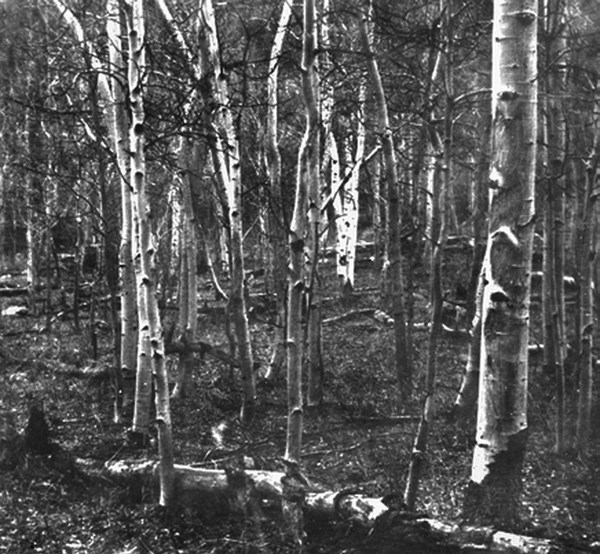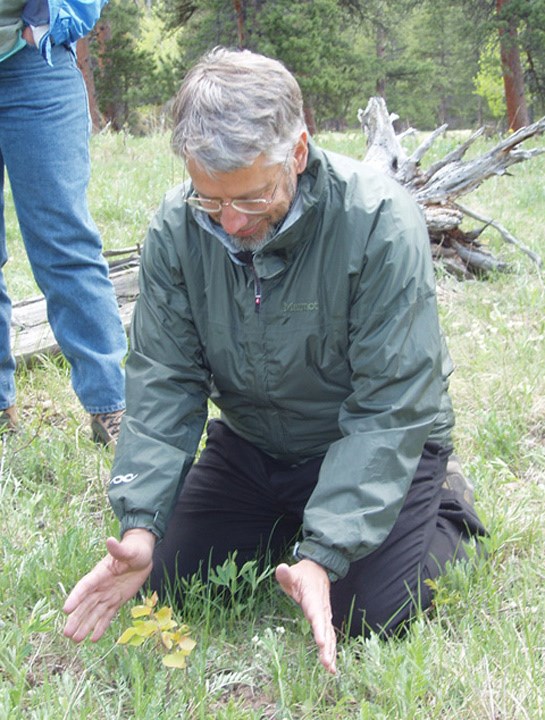Last updated: October 27, 2017
Article
Aspen Age Distribution

The Question: How do recent patterns of aspen establishment in Rocky Mountain National Park (RMNP) compare to long-term trends?
The establishment of new aspen stands in the central Rocky Mountains is generally related to major disturbances, particularly stand-replacing forest fires, as well as browsing by wildlife or livestock, and conifer competition. Fire often results in more aspen while heavy browsing typically results in fewer aspen. However, the influences of these disturbances may have changed since the 1900s as a result of fire suppression, changing climate conditions, increased browsing by elk, and the introduction of livestock.

The Project: Examine the age structure and genetic diversity of aspen stands throughout the park.
A team led by Dan Binkley of Colorado State University, part of a larger US Geological Survey aspen ecology study, examined the age structure and genetic diversity of aspen to determine the timing and conditions of stand establishment and regeneration in areas of low-elevation on the east-side of the park, including open meadows or parks such as Moraine and Horseshoe in the core elk winter range. Researchers studied the characteristics of stands to link successful aspen regeneration to elk browsing and density, climate, and topographic variables such as elevation. They sampled aspen from the park’s lowest elevations of 2,500 m (8,200 feet) to the upper range of aspen at 3,200 m (10,500 feet). Researchers used tree-ring dating and genetic techniques to determine the establishment ages of stands. They compared data from the stands on the core winter range to those outside the range and genetic diversity within and between aspen stands. Researchers estimated age distribution by assuming dated trees represented the age of a group or cohort of aspen. Ages are accurate within 0-3 years.
The Results: During the period 1975 to 1995, aspen decreased where heavy elk browsing occurred in the low elevations based on the established trend from 1855 to 1965. This trend was not observed in areas outside of the core winter elk range.
The age structure of aspen in the park indicates that the interacting effects of fire, changes in the elk population, and livestock grazing were relatively consistent from 1855 to 1965, though there were periods of high or low survival and recruitment, the process of adding individuals to a population. Elk populations and browsing pressure increased in the mid-1960s as a result of the cessation of the park’s elk reduction program in response to a change in National Park Service policy. Of the 651 trees aged, the oldest was dated to 1689 and is believed to be the oldest reported age for an aspen tree anywhere. At the low elevation on the east-side where heavy browsing occurs, 80-95% fewer aspen occurred than expected between 1975 and 1995 based on the 1855-1965 trend. This downward trend was not observed park-wide. Rather, in higher elevations, and on the west-side of the park in areas that are outside of the core winter elk range, more aspen were present than expected and most stands contained young stems. These data support the theory that impacts from elk browsing have been more important in reducing aspen numbers than climate conditions, fire incidence, or conifer growth in RMNP.This summary is based on published, peer-reviewed and/or unpublished reports available at the time of writing. It is not intended as a statement of park policy or as a definitive account of research results. For more information on the park’s research program, see www.nps.gov/romo
Date: 05/14/2008. Photo credits: NPS-RMNP, USGS.
